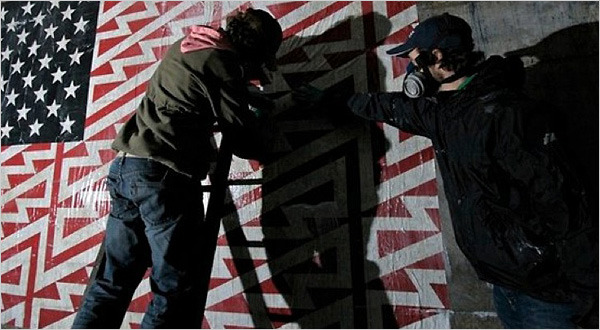Art is what you can get away with*
 Monday, January 2, 2012 at 10:10AM
Monday, January 2, 2012 at 10:10AM An example of Michel Luc Bellemare's "supra impasto" technique. Photo courtesy Ottawa Citizen.
My colleague Zev Singer has a feature in this week's Observer about an Ottawa artist named Michel Luc Bellemare who has spent the past few years pulling off a fascinating artistic grift: He's fudged his resume, claiming have "his work in the National Gallery; acquisitions by the Art Gallery of Ontario and the Museum of Civilization; a PhD from Carleton University; stories written about his groundbreaking work in the Globe and Mail, the New York Times and USA Today."
None of it is true, but that hasn't stopped Bellemare from using these purported credentials to get media attention and space in local galleries.
As Zev points out, this is an old trick, and Bellemare is hardly the first artist to use calculated misrepresentation as a way of not only advancing his career, but also making a meta-statement about the nature of art. But unlike, say, Warhol, whose deceptions were designed as comments on the superficiality of art and the shallowness of fame, Bellemare can't seem to decide whether he's making an artistic statement, or just trying to get people to pay attention to his paintings.
In the end, the question is whether Bellemare's work is any good. He uses what he calls a “supra impasto” technique to create a “highly textured surface, globs upon globs of colour.” And while Bellemare "considers it work of the highest level," curator Diana Nemiroff is not so sure:
“Yes, there is a slight possibility that we’re unable to see the genius in his work,” Nemiroff said. “Historically, there have been artists who’ve been overlooked. Today, when the art world is global and constantly searching for the next new thing, it seems less likely that a new van Gogh, for instance, would see his paintings go unsold.”
Here's a link to Zev's story, and a gallery of Bellemare's work.
* Thanks to Andrew Coyne for the title.
 art,
art,  bellemare,
bellemare,  zev singer in
zev singer in  art
art 
